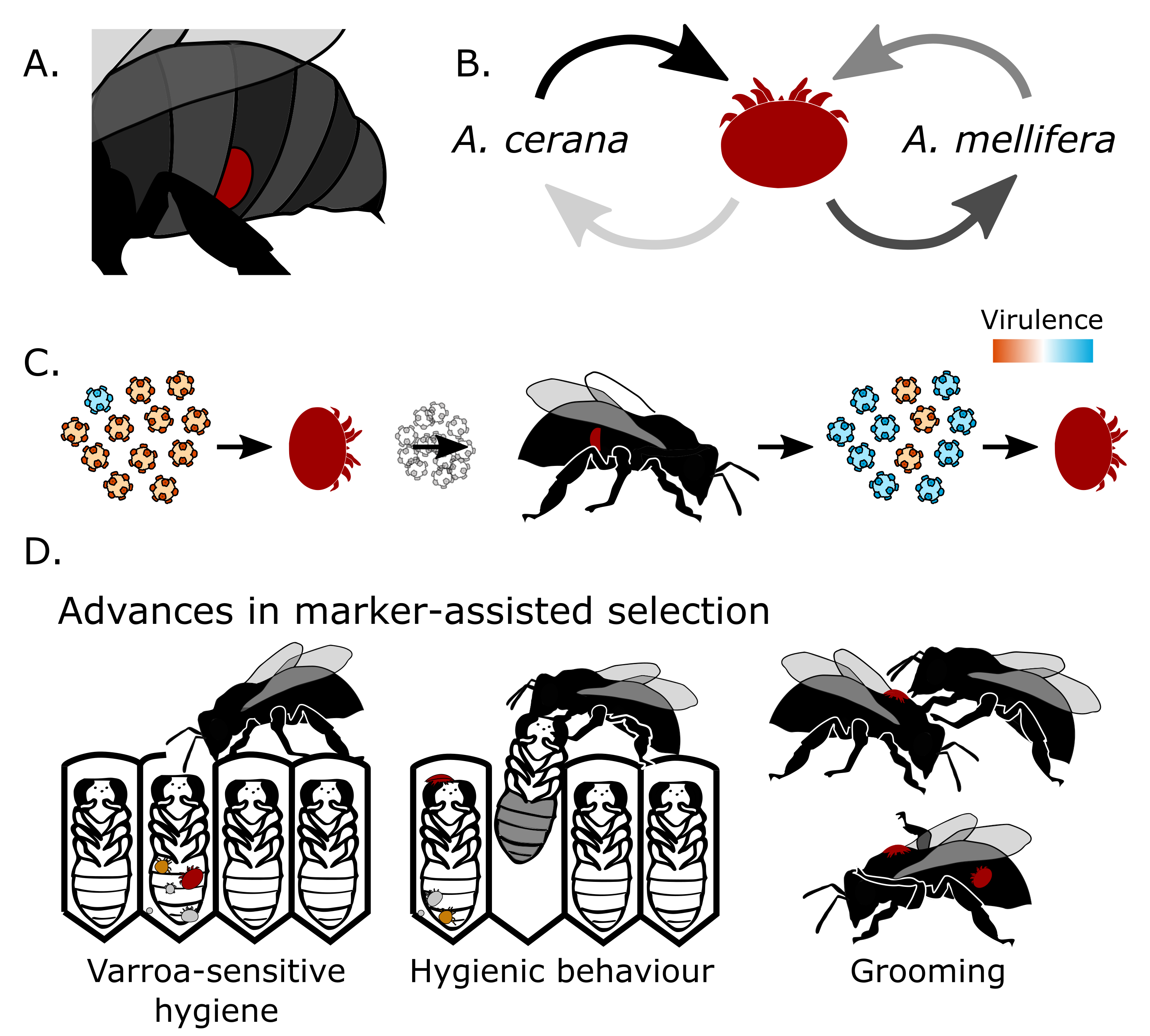The parasitic mite, Varroa destructor, has shaken the beekeeping and pollination industries since its spread from its native host, the Asian honey bee (Apis cerana), to the naïve European honey bee (A. mellifera) used commercially for pollination and honey production around the globe. Varroa is the greatest threat to honey bee health. Worrying observations include increasing acaricide resistance in the varroa population and sinking economic treatment thresholds, suggesting that the mites or their vectored viruses are becoming more virulent. Highly infested weak colonies facilitate mite dispersal and disease transmission to stronger and healthier colonies. Here, we review recent developments in the biology, pathology and management of varroa, and integrate older knowledge that is less well known.

